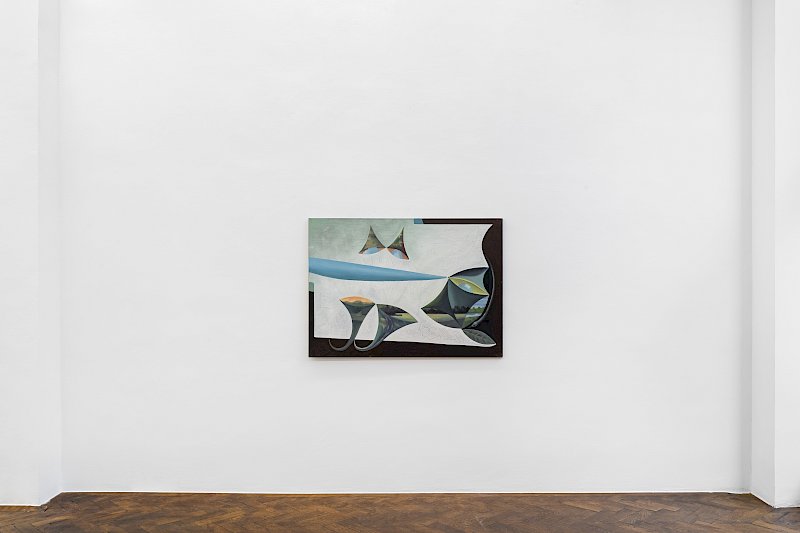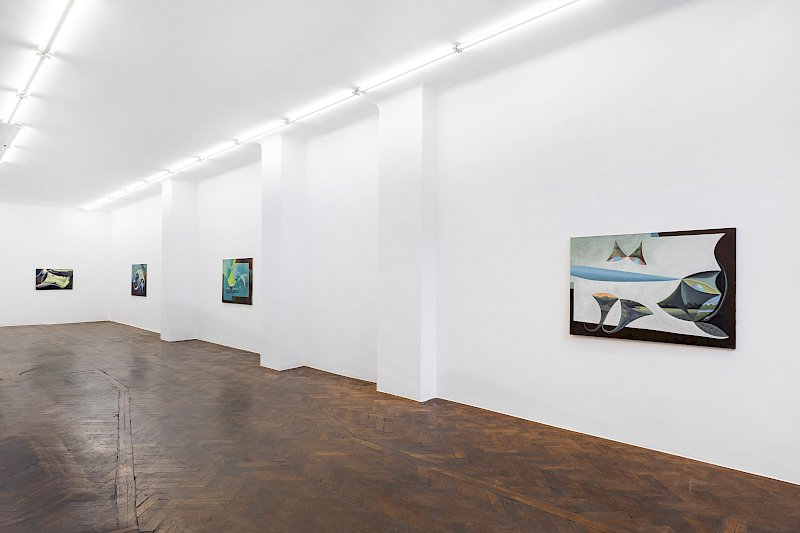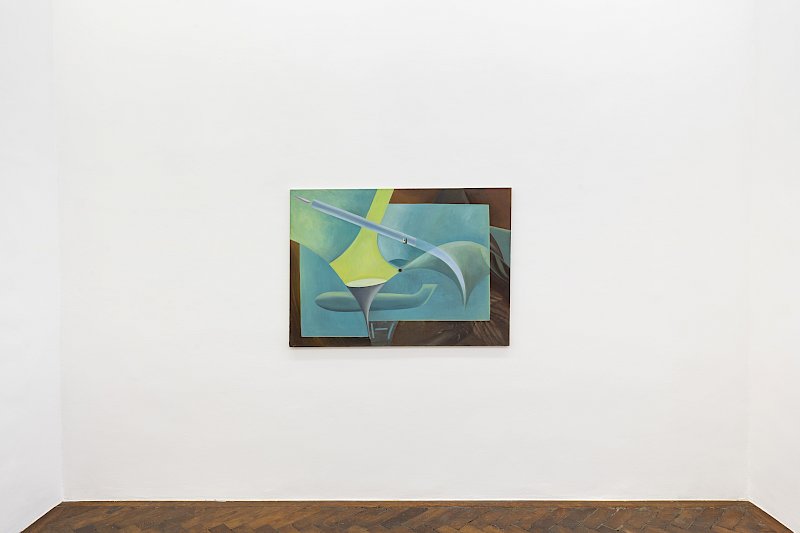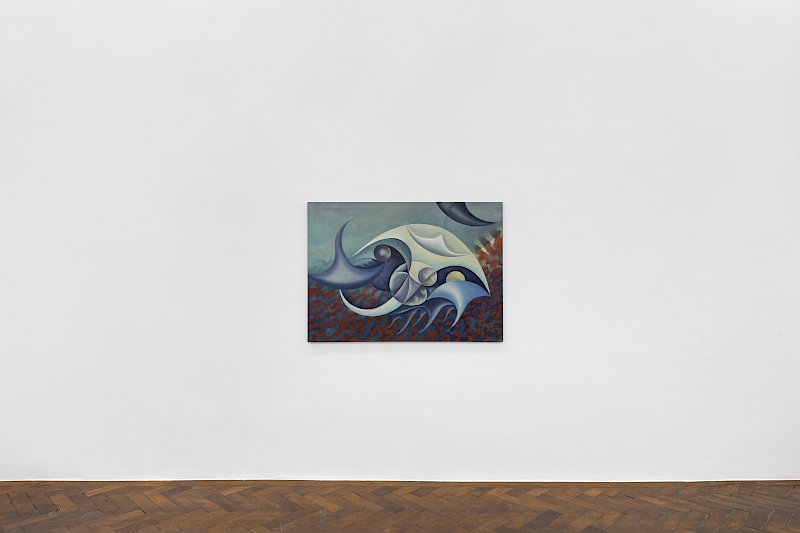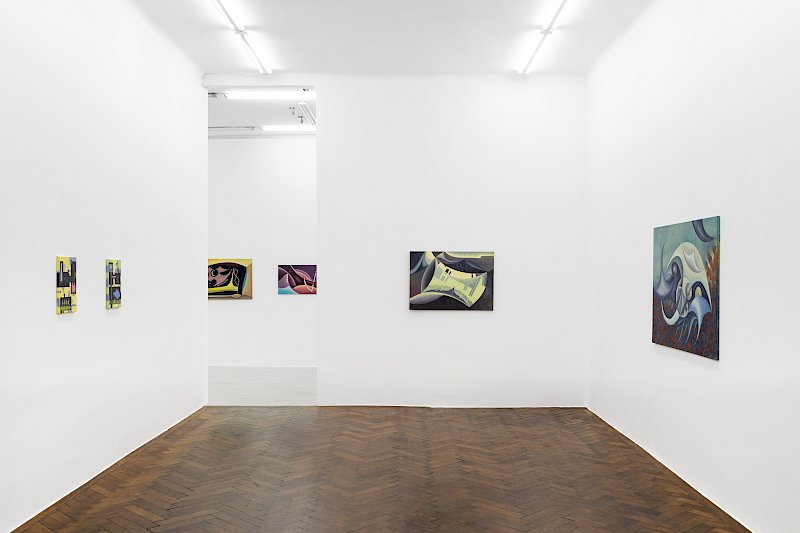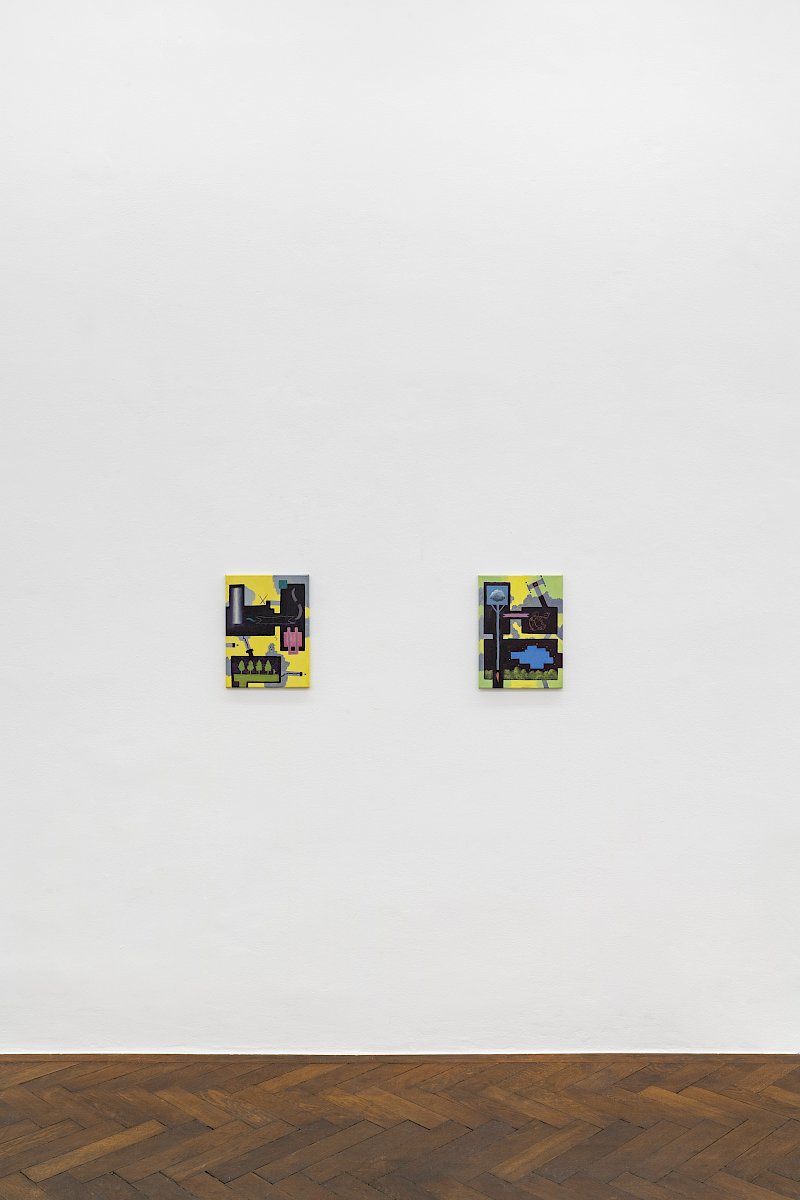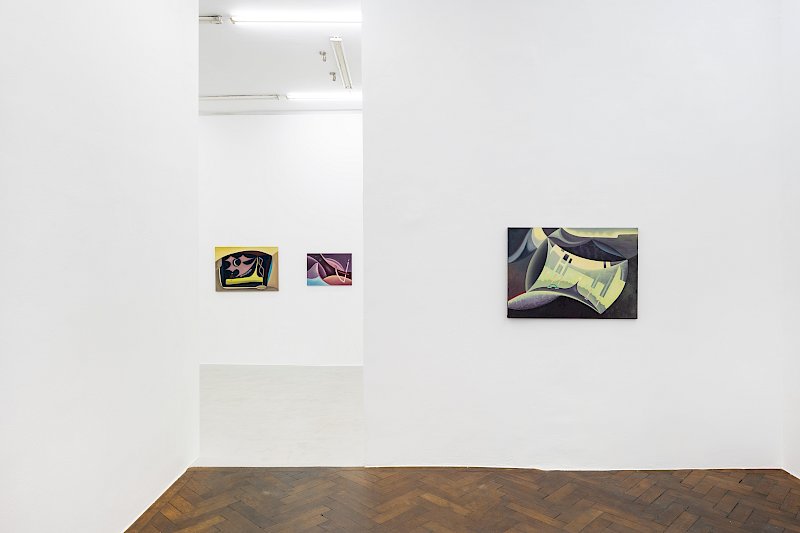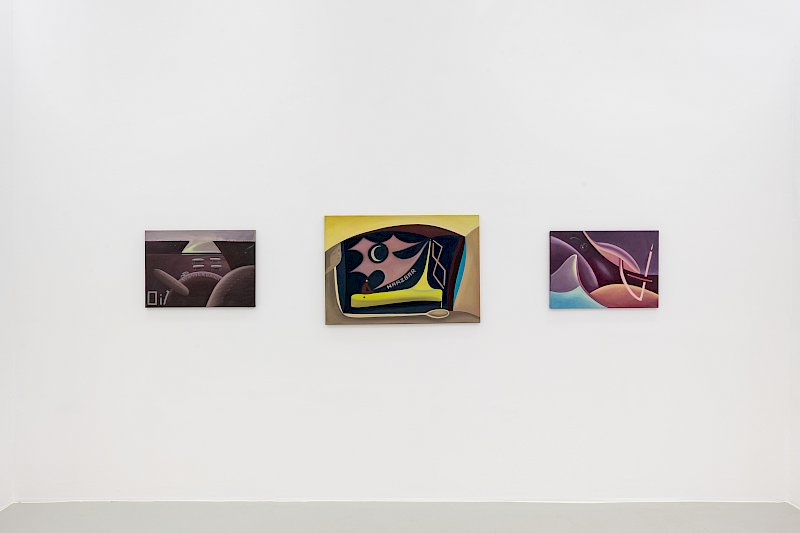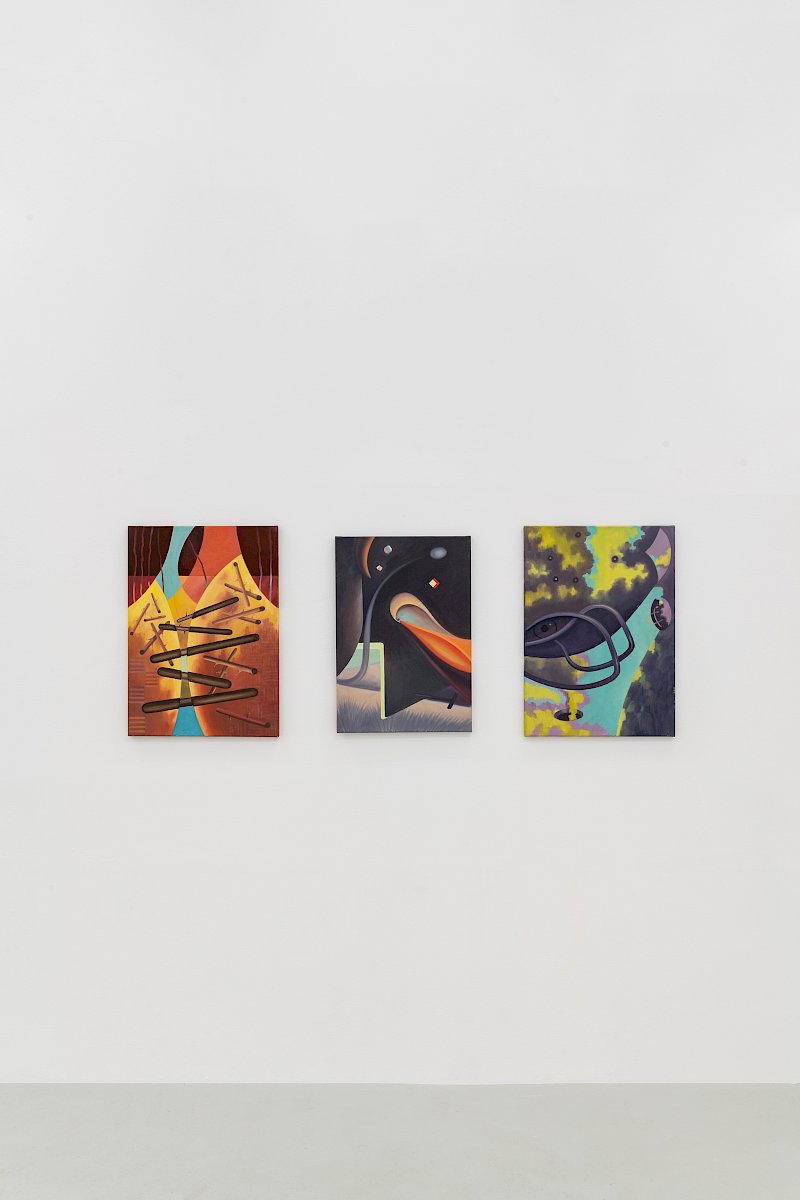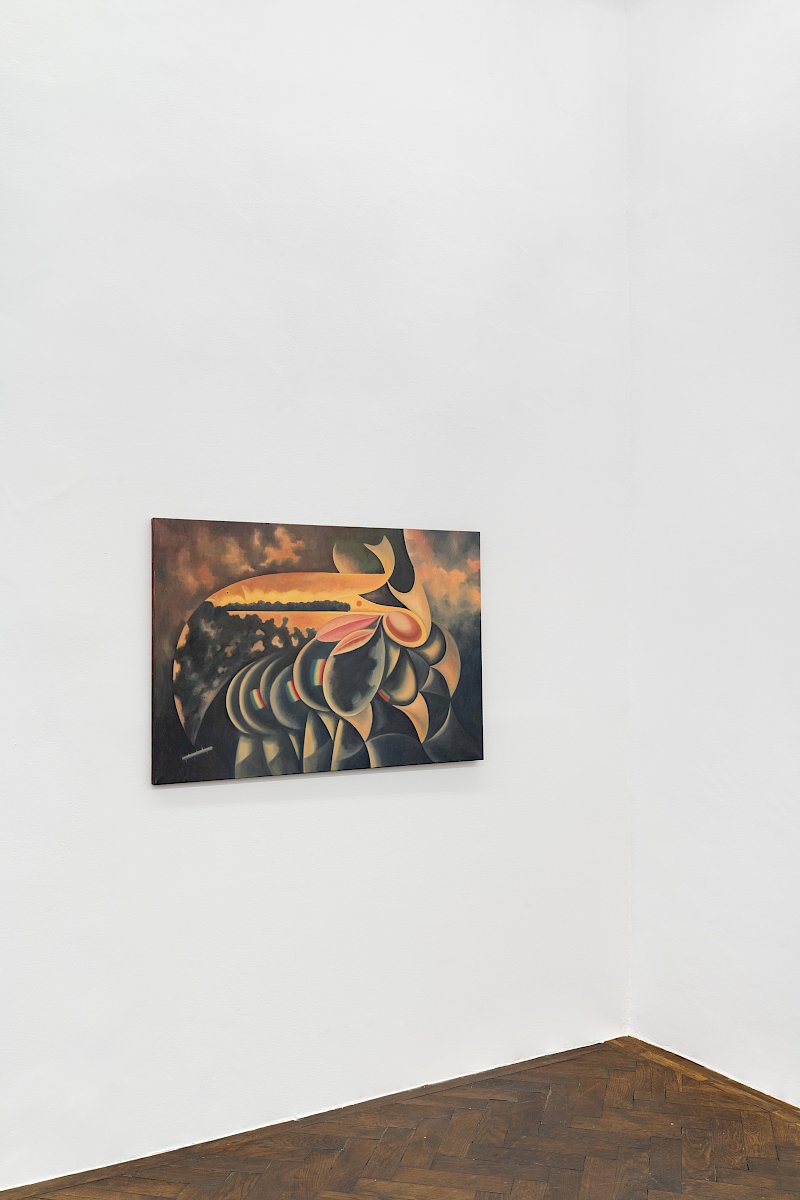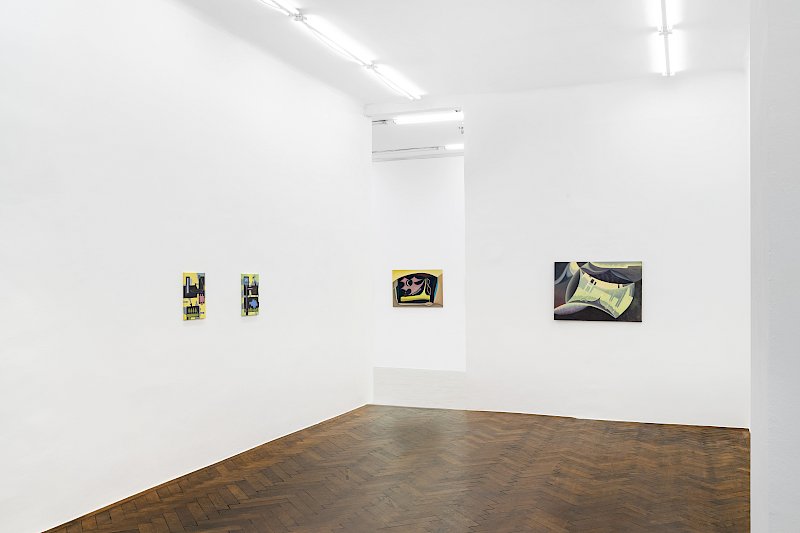Series within an artistic oeuvre are defined by a certain degree of coherence between the individual works and a moment of distinction that sets the series apart from another. If one removes the linear, chronological perspective on an artistic work and views it more as a network of singular events, then one can identify individual points that exist simultaneously, independently of each other and do not occur in chronological order. If such points are connected on the basis of parameters other than chronological ones, new cycles of works are formed or even a separate corpus of work can emerge—a work within a work.
One such work within a work is comprised by Franz Vana's Sonntagsbilder (Sunday Paintings). For the first time, a selection from this cycle of works is presented in this exhibition.
In the artist's studio, in Rauchwart in Burgenland, a former spirit distillery, “Sunday is painting day”, according to the artist. The Sonntagsbilder themselves are mirror cabinets that reflect and refract the world around them. Loose particles of reality, consisting of pictorial motifs and partly linguistic signifiers, coagulate into defined forms only for a brief moment in contemplation. Often, in this maelstrom of lines and colour surfaces, there are individual points that form visual centres of gravity where the gaze can pause for a moment. The visible seems to merge into the legible, until one notices that the paintings throw the gaze back on ourselves and the briefly frozen forms dissipate again.
The individual fragmentary motifs that can be identified are only a pretext, they were never intended to be completed. A pretext through whose diversions the composition first opens up. According to the artist, painting itself becomes a "transport endeavour". It transports us into a state on the threshold between the visible and the legible, dream and reality. A distillate of the forms of free-flowing imagination. Like those images that still seem tangible shortly after awakening, but are already in the process of disappearing. Images that are based on the temporality, formlessness and randomness of dreams.
The depth of the mind is indeed delirium, or—same thing from another point of view—chance and indifference.[1]
[1] Deleuze, Gilles: Empiricism and Subjectivity. Columbia University Press: New York 1991, p. 23
